20 Best Unmissable Activities in Darwin [Guide 2025]
Looking for the best activities to do in Darwin City ? Below a list of Darwin must do

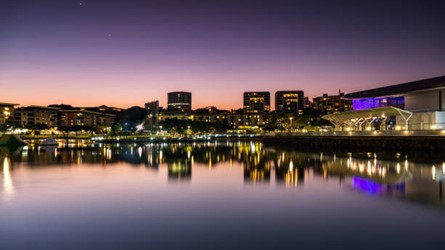
Discover the allure of Darwin City, Australia – where history, culture, and nature converge in a uniquely tropical embrace. This vibrant hub invites you to explore its lively waterfront, indulge in fresh seafood at bustling markets, and unravel tales of resilience at museums. With the backdrop of stunning national parks and a rich Indigenous heritage, Darwin promises a journey like no other. Best of all, the adventure comes free – where every step is a discovery and every moment a treasure in this captivating city.
For history enthusiasts, the city offers a glimpse into its past at the Museum and Art Gallery of the Northern Territory, where Indigenous art, maritime history, and the story of Cyclone Tracy are vividly showcased. Nature lovers can explore the nearby national parks, including Litchfield National Park and Kakadu National Park, renowned for their breathtaking landscapes, waterfalls, and unique wildlife.
if you travel just outside your will experience the real Australian outback, saltwater crocodiles, and plenty of things to do if you like outdoors .
Whether basking in the tropical climate, exploring indigenous art, or immersing oneself in the city’s resilient history, Darwin City stands as an inviting destination where every corner unveils a new layer of its diverse and fascinating tapestry.
Looking for the best restaurants in Darwin ? Check our article HERE
Best time to visit Darwin ? Check our article HERE

PLAN OF THE ARTICLE :
- Why going to Darwin ?
- A brief about the Geography of Darwin
- Population of Darwin
- A brief on the History of Darwin
- How is the Weather in Darwin ?
- Cool things to do in Darwin : what can be done ?
- Top things to do in Darwin : Best markets

Fun Things to do in Darwin City, Australia
Must see in Darwin : Why going to Darwin ?
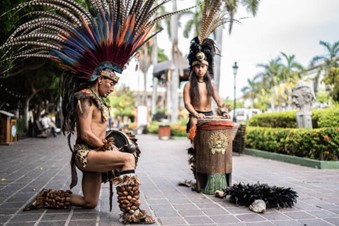
Cultural Diversity:
Darwin is a melting pot of cultures, reflecting the rich tapestry of Australia’s diverse population. The city is home to a significant Indigenous community, and various cultural festivals, art exhibitions, and performances celebrate this diversity. The multicultural influences are also evident in the culinary scene, offering a range of international cuisines.
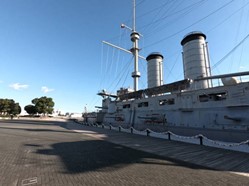
Historical Significance:
With a history dating back to Indigenous communities, Darwin gained prominence in the late 19th century as a telegraph station and later as a port. It played a crucial role during World War II when Japanese forces bombed it. The remnants of this history can be explored at sites like the Defence of Darwin Experience and the Darwin Military Museum.
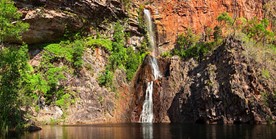
Natural Beauty:
Darwin’s natural surroundings are a key attraction. The city is a gateway to the iconic Kakadu National Park, known for its stunning landscapes, Indigenous rock art, and diverse wildlife. Litchfield National Park, with its waterfalls and magnetic termite mounds, is another natural gem nearby.

Laid-back Lifestyle:
Darwin exudes a laid-back and friendly vibe. The city’s pace is slower compared to larger metropolises, allowing residents and visitors to enjoy a more relaxed lifestyle. The Mindil Beach Sunset Market, where people gather to watch the sunset, reflects this easygoing atmosphere.
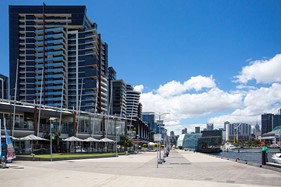
Modern Amenities:
While embracing its historical and natural charm, Darwin is a modern city with all the amenities one would expect. Shopping precincts, restaurants, and entertainment venues cater to diverse tastes. The waterfront area, with its recreational spaces and dining options, is a popular spot for both locals and tourists.
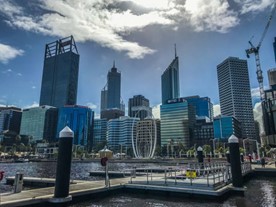
Strategic Hub:
Given its proximity to Asia, Darwin serves as a strategic hub for trade and defence. The city’s port plays a vital role in facilitating economic activities, making it an essential part of Australia’s northern development.
Darwin is a unique and dynamic place that seamlessly blends its natural beauty, cultural diversity, historical significance, and modern amenities. Whether you’re exploring its Indigenous heritage, enjoying the tropical landscapes, or savouring the multicultural flavours, Darwin offers a distinctive experience that sets it apart on Australia’s map.
Top things to do in Darwin : a brief about the Geography of Darwin

Darwin, the capital city of the Northern Territory in Australia, is situated in the country’s northernmost region. Located on the Timor Sea, Darwin boasts a unique geography that influences its climate, environment, and cultural diversity.
The city is known for its tropical climate characterized by two distinct seasons: the wet season and the dry season. The wet season, typically from November to April, brings heavy rainfall, tropical storms, and high humidity. In contrast, the dry season, occurring from May to October, is marked by clear skies, cooler temperatures, and lower humidity. The tropical climate contributes to the lush vegetation and diverse wildlife in the surrounding areas.
Darwin is positioned on a peninsula, providing it with stunning coastal landscapes. The Timor Sea to the west of the city is home to picturesque beaches, and residents and visitors alike can enjoy the natural beauty of locations like Mindil Beach and East Point Reserve. The city’s harbour, Port Darwin, is a vital gateway for trade and transport.
While coastal plains characterize the immediate vicinity of Darwin, the region also features a network of rivers, including the Adelaide River and the Mary River. These waterways play a crucial role in supporting the local ecosystems and are known for their rich biodiversity.
The city serves as a hub for exploring the unique landscapes of the Northern Territory, including Kakadu National Park, Litchfield National Park, and the iconic Uluru. The diverse geography of Darwin and its surroundings contributes to the region’s cultural richness, as it is home to a vibrant mix of Indigenous Australian cultures, reflecting the deep connection between the land and its people.
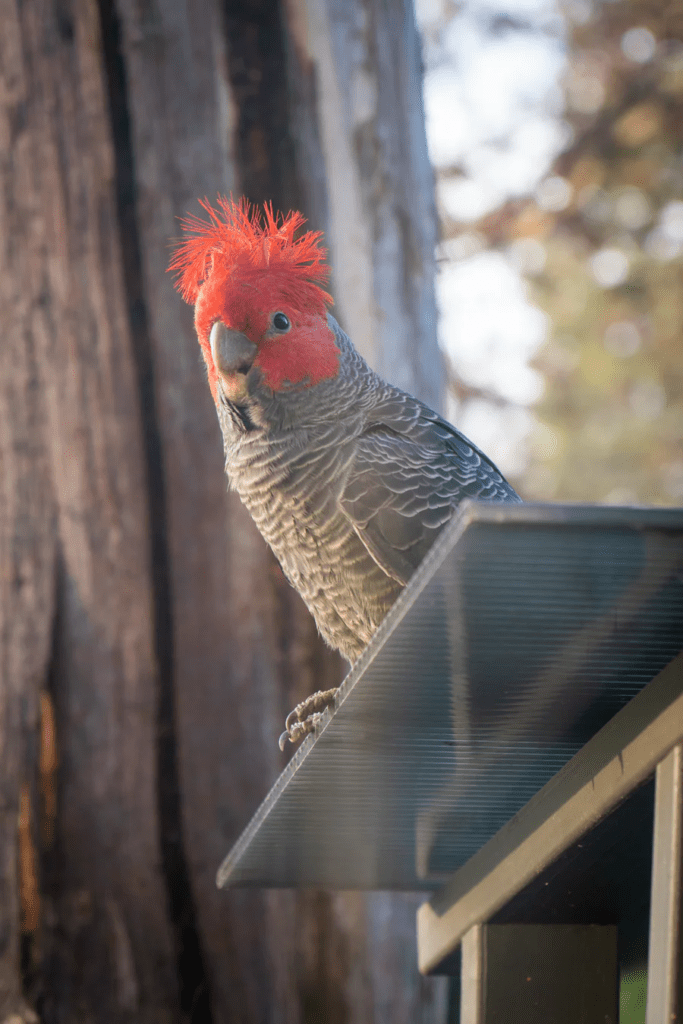
Darwin top attractions : Population of Darwin
As of my last knowledge, in January 2022, the population of Darwin, the capital city of the Northern Territory in Australia, was estimated to be around 147,255 people. However, it’s important to note that population figures can change over time due to factors such as migration, birth rates, and other demographic trends.
Darwin’s population is characterized by its diversity, with a mix of cultures and backgrounds. The city has a significant Indigenous Australian population, and the rich cultural heritage of the local Aboriginal and Torres Strait Islander communities contributes to the city’s unique identity.
The population of Darwin has experienced fluctuations over the years due to economic factors, including the presence of military bases, resource industries, and government activities. The city plays a crucial role in the economic landscape of the Northern Territory and serves as a gateway for industries such as mining, tourism, and defence.
The city’s growth is influenced by its tropical climate, lifestyle appeal, and economic opportunities. While Darwin is relatively small compared to major cities in Australia, its strategic location, cultural richness, and connection to the surrounding natural landscapes make it an important urban centre in the Northern Territory.
For the most up-to-date population figures and demographic information, it is recommended to refer to recent census data or official statistics provided by relevant government authorities. Population numbers can change, and accurate and current data is essential for a comprehensive understanding of Darwin’s demographic landscape.

Must see places in Darwin : a brief on the History of Darwin
– Indigenous Presence: Before European settlement, the Darwin region was home to various Indigenous Australian groups, such as the Larrakia people, whose rich cultural heritage is deeply intertwined with the land.
– European Exploration: European exploration of the area began in the early 19th century. The first known visit by Europeans was in 1839 when HMS Beagle, captained by John Clements Wickham, arrived.
– Settlement and Port Darwin: The settlement of Port Darwin was established in 1869 as a result of concerns about the growing influence of other European nations in the region. It was named after Charles Darwin, the renowned naturalist.
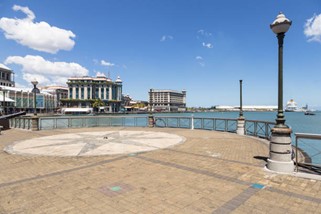
– Overseas Telegraph Line: In the late 19th century, Darwin became a key telegraph station connecting Australia to an overseas telegraph line, enhancing its strategic importance.
– World War II: During World War II, Darwin gained significance as a military base. The city was bombed by Japanese forces in 1942, resulting in significant damage and loss of life. The attacks were part of the broader Pacific War.
– Post-War Development: After the war, Darwin experienced gradual development. Infrastructure projects, including the construction of the Adelaide to Darwin railway, contributed to the city’s growth.
– Cyclone Tracy: In 1974, Darwin faced a devastating natural disaster when Cyclone Tracy hit on Christmas Day. The cyclone caused widespread destruction, and much of the city had to be rebuilt.
– Modern Era and Economic Growth: In recent decades, Darwin has seen economic growth driven by industries such as mining, natural gas, and tourism. The city has become a gateway to exploring the natural wonders of the Northern Territory, including Kakadu National Park and Litchfield National Park.

– Diverse Culture: Darwin’s population reflects a mix of cultures, with a significant Indigenous presence and influences from Southeast Asia. The city hosts various cultural events and festivals celebrating its diverse heritage.
– Strategic Importance: Darwin remains strategically important due to its proximity to Southeast Asia and its role in defence and trade. The city’s development continues to be shaped by its unique history and geographical location.
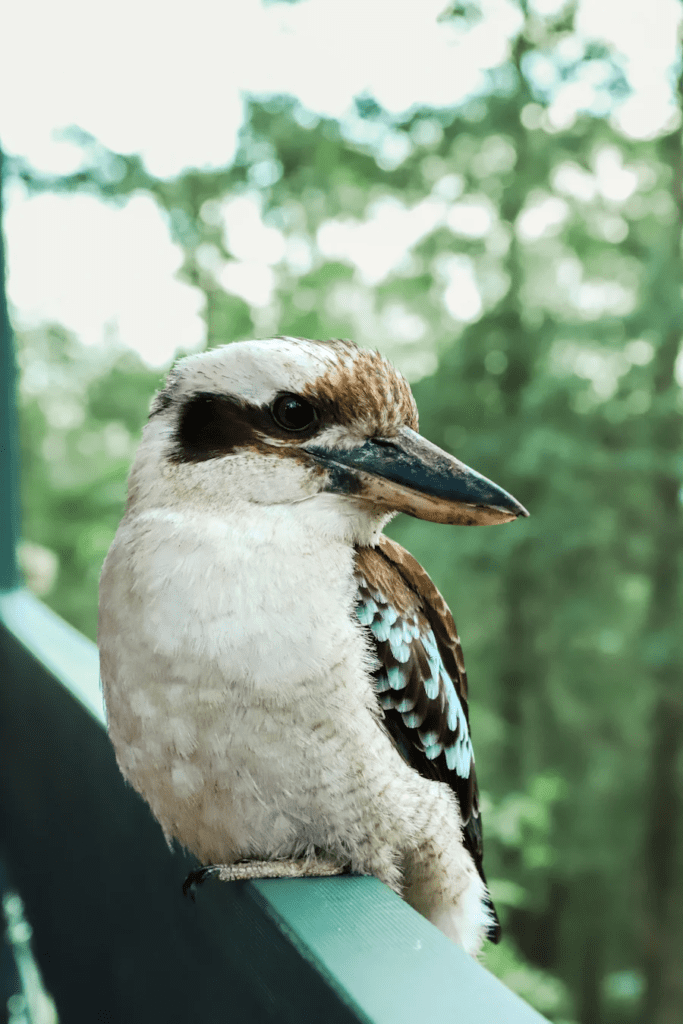
⚠️ Don’t forget our complete guides of Australia
✅ Best beaches in Western Australia
☝🏻 And way more
🔍 Just type ” Australia “ or the topic you choose in the search bar for all our articles
Things to see around Darwin : but first how is the Weather
1. Tropical Climate:
– Darwin experiences a tropical climate, characterized by distinct wet and dry season.
– The city is situated in the Top End of Australia, which contributes to its warm temperatures throughout the year.
2. Wet Season (November to April):
– The wet season typically begins in November and extends through April.
– During this period, Darwin encounters heavy rainfall, high humidity, and the possibility of tropical storms and cyclones.
– Daytime temperatures often range from 25 to 33 degrees Celsius (77 to 91.4 degrees Fahrenheit).
– The lush vegetation and vibrant green landscapes are a result of the abundant rainfall.
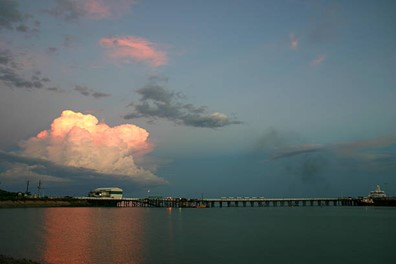
3. Dry Season (May to October):
– The dry season, from May to October, is characterized by lower humidity and less rainfall.
– Clear skies and cooler temperatures prevail during this time, with daytime temperatures ranging from 21 to 32 degrees Celsius (69.8 to 89.6 degrees Fahrenheit).
– The dry season is the most popular time for tourism and outdoor activities due to its pleasant weather.
4. Temperature Fluctuations:
– Darwin experiences relatively consistent temperatures throughout the year.
– Average annual temperatures range from around 24 to 32 degrees Celsius (75.2 to 89.6 degrees Fahrenheit).
5. Humidity:
– Humidity is a significant factor in Darwin’s climate, especially during the wet season.
– Humidity levels can exceed 80%, contributing to the warm and sticky feel in the air.
6. Cyclone Season:
– The wet season is also the cyclone season in northern Australia.
– Cyclones, or tropical storms, occasionally affect the region, bringing strong winds and heavy rainfall.
– Residents and authorities closely monitor weather warnings during this time.

7. Coastal Influence:
– Darwin’s proximity to the Timor Sea and the Arafura Sea influences its weather patterns.
– Sea breezes provide some relief from the heat, especially during the dry season.
8. Record Temperatures:
– The highest recorded temperature in Darwin is around 38 to 40 degrees Celsius (100.4 to 104 degrees Fahrenheit).
– The lowest temperatures rarely drop below 15 degrees Celsius (59 degrees Fahrenheit).
9. Unique Sunset Experience:
– Darwin is known for its spectacular sunsets, attracting locals and tourists alike.
– The Mindil Beach Sunset Market, held during the dry season, is a popular spot to enjoy the breathtaking view as the sun sets over the ocean.
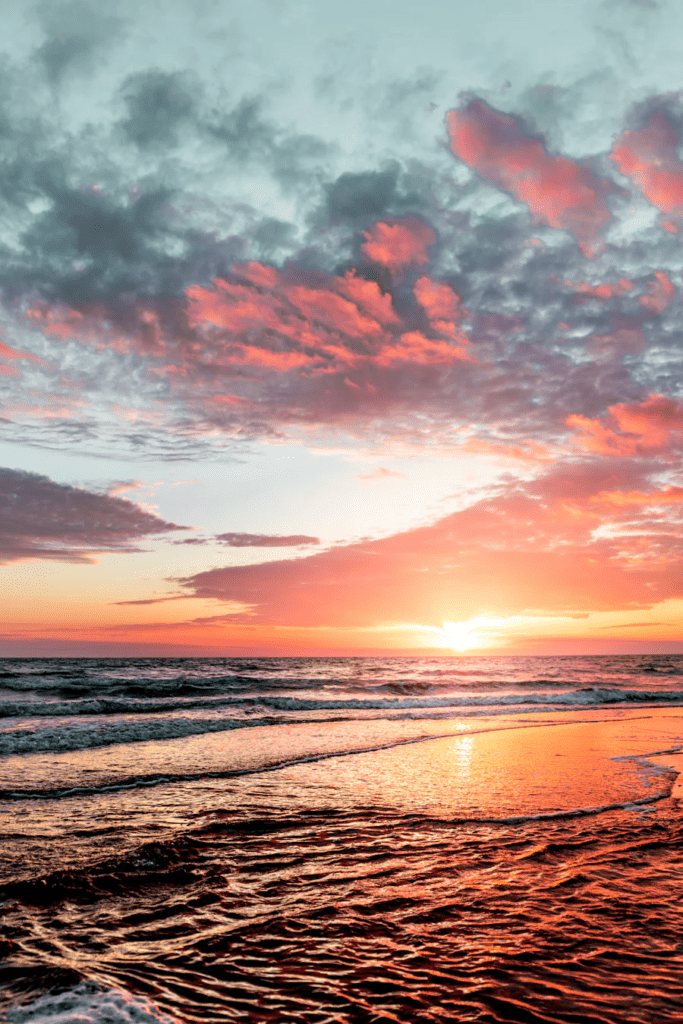
10. Impact on Outdoor Activities:
– The weather significantly influences outdoor activities and events in Darwin.
– Many festivals and events are scheduled during the dry season when the weather is more predictable and favourable.
11. Water Activities:
– The warm temperatures and proximity to water make Darwin ideal for water-based activities.
– Swimming, boating, and fishing are popular pastimes for residents and visitors.
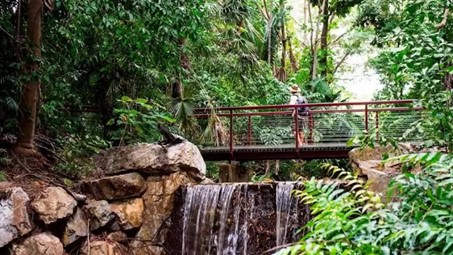
George Brown Darwin Botanic Gardens | NT.GOV.AU
12. Garden and Wildlife:
– The wet season’s rainfall contributes to lush gardens and flourishing wildlife.
– The George Brown Darwin Botanic Gardens showcase a variety of tropical plants, and the city’s parks become vibrant with greenery.
13. Air Conditioning and Cooling Strategies:
– Due to the warm temperatures and high humidity, air conditioning is a common feature in homes and businesses.
– Locals often employ cooling strategies, such as staying hydrated and wearing light clothing, to cope with the tropical climate.
Darwin’s weather is defined by its tropical characteristics, featuring a distinct wet season with heavy rainfall and high humidity, followed by a dry season with clear skies and cooler temperatures. The city’s climate influences various aspects of daily life, from outdoor activities to the timing of cultural events, making it a unique and dynamic place to experience different weather patterns throughout the year.
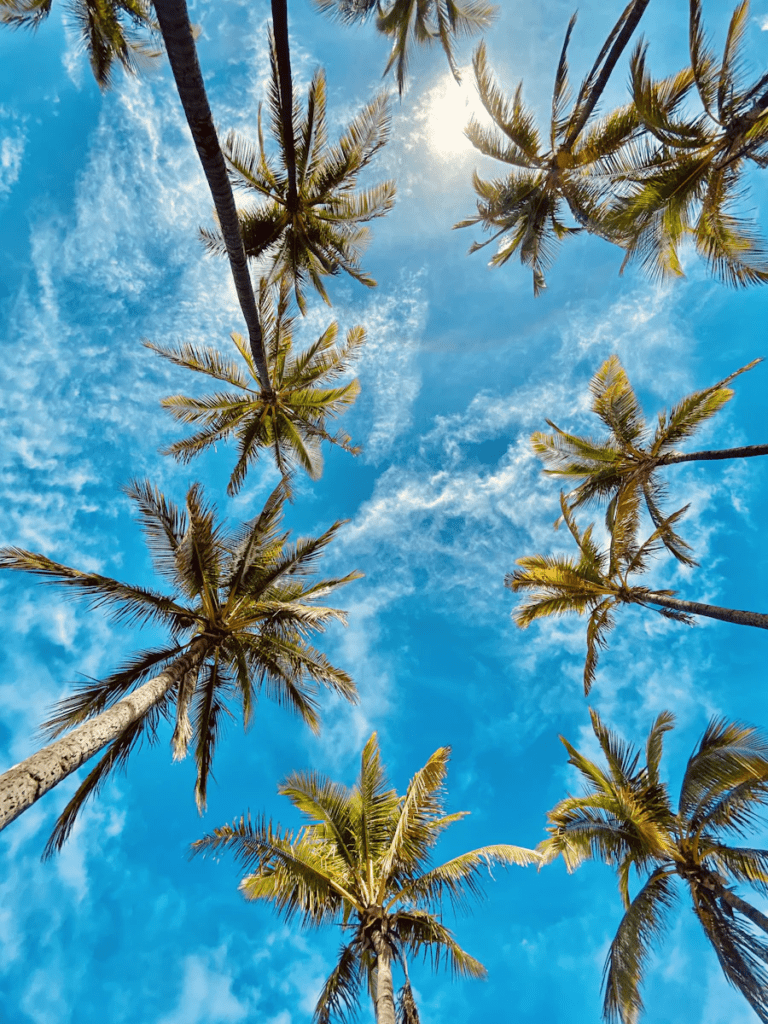
Cool things to do in Darwin : what can be done ?
1. Mindil Beach Sunset Market:
– A vibrant market held during the dry season.
– Offers a variety of food stalls, arts and crafts, and live performances.
– Famous for its stunning sunset views over the Timor Sea and near tiwi islands.
2. Crocosaurus Cove:
– A unique reptile park in the heart of Darwin.
– Home to a diverse range of crocodiles, including the famous “Cage of Death” experience.
– Provides educational programs on crocodile conservation.
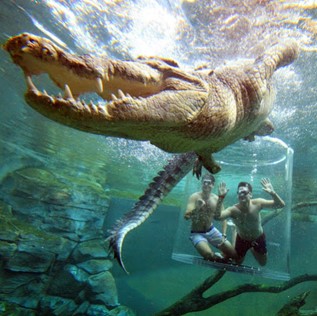
Croccove | Home Page (crocosauruscove.com)
– A UNESCO World Heritage site known for its biodiversity and Aboriginal rock art.
– Offers diverse landscapes, including wetlands, waterfalls, and escarpments.
– Opportunities for wildlife spotting, hiking, and exploring ancient cultural sites.
– Famous for its magnetic termite mounds and stunning waterfalls.
– Features natural swimming pools like Wangi Falls and Buley Rockhole.
– A great day-trip destination from Darwin.
5. Museum and Art Gallery of the Northern Territory:
– Showcases the region’s natural and cultural history.
– Houses an extensive collection of Aboriginal art.
– The Cyclone Tracy exhibit provides insights into the devastating cyclone that hit Darwin in 1974.
6. Darwin Waterfront Precinct:
– A recreational area featuring a wave pool, swimming lagoon, and a variety of dining options.
– Ideal for families with a safe swimming environment.
– Offers a relaxed atmosphere with views of the harbour.
– Located south of Darwin, offering a unique wildlife experience.
– Features natural habitats where visitors can observe native animals.
– Educational programs on local wildlife and conservation.
– Home to a diverse range of animals, including crocodiles, big cats, and exotic birds.
– Offers wildlife presentations and interactive experiences.
– Focuses on wildlife conservation and education.
Crocodylus park is definitively an activity to do if you want to experience the NT’s vibe
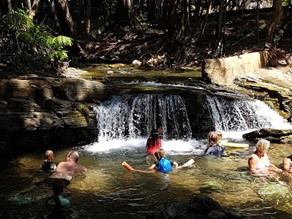
Berry Springs Nature Park | NT.GOV.AU
– A popular spot for swimming, picnics, and wildlife observation.
– Natural thermal pools surrounded by lush vegetation.
– Relaxing atmosphere with shaded areas for a laid-back day.
10. Fannie Bay Gaol:
– A historical site showcasing the city’s past as a penal colony.
– Guided tours provide insights into the gaol’s history and notorious inmates.
– Offers a glimpse into Darwin’s colonial era.
11. Charles Darwin National Park:
– Located on the outskirts of the city.
– Features walking trails with panoramic views of Darwin and the harbour.
– Historical military bunkers from World War II can be explored
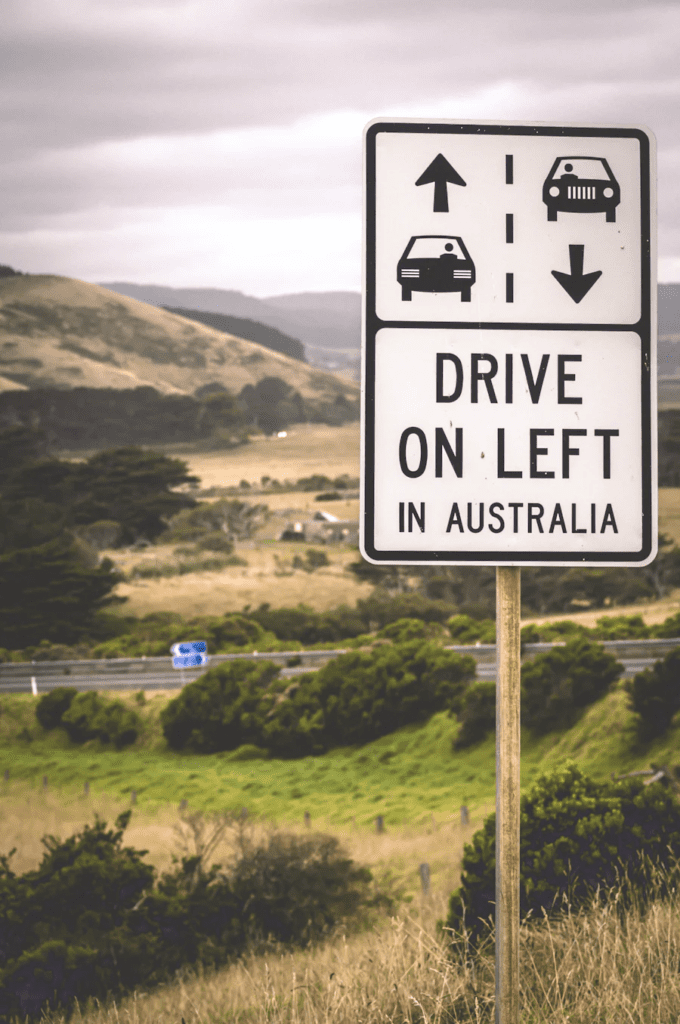
.
12. Stokes Hill Wharf:
– A waterfront area with restaurants, shops, and recreational activities.
– Offers sunset cruises, fishing charters, and a relaxed dining atmosphere.
– Historical significance as a former military facility during World War II.
– Showcases the Northern Territory’s aviation history.
– Displays a variety of aircraft, including the B52 bomber.
– Educational exhibits on aviation technology and development.
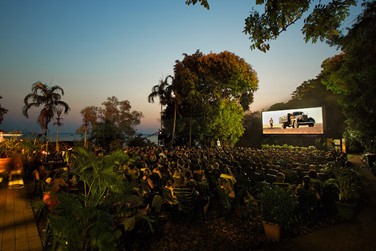
Deckchair Cinema – movie times & tickets
14. Deckchair Cinema:
– An outdoor cinema experience during the dry season.
– Located under the stars with views of Darwin’s skyline.
– Offers a unique movie-watching experience in a tropical setting.
– A lively market featuring fresh produce, local arts, and crafts.
– Known for its multicultural food stalls offering diverse cuisines.
– Held every Saturday, providing a glimpse into Darwin’s community spirit.
16. Mindil Beach:
– Besides the famous market, Mindil Beach is a beautiful sandy stretch.
– Ideal for picnics, beachcombing, and enjoying the tropical sunsets.
– Frequently hosts events and festivals, adding to its vibrant atmosphere.
17. Nightcliff Foreshore:
– A picturesque coastal area with walking and cycling paths.
– Features a popular swimming pool and playground for families.
– A relaxed environment with scenic views of the Arafura Sea.
18. East Point Reserve:
– A large park with natural landscapes, walking trails, and picnic spots.
– Home to Lake Alexander, an artificial swimming lake.
– Historical military sites and gun emplacements can be explored.
– Located at Doctors Gully, a unique opportunity to hand-feed hundreds of fish.
– Educational experience for families, showcasing diverse marine life.
– Timed fish-feeding sessions provide an interactive and memorable outing.

Fish Feeding Tourist Attraction | Aquascene Doctors Gully | Darwin, NT, Australia
– Explore the harbour and nearby islands on a scenic cruise.
– Options for sunset cruises, wildlife spotting, and fishing trips.
– A relaxing way to appreciate Darwin’s coastal beauty.
Darwin offers a plethora of activities and places to explore, ranging from cultural experiences and historical sites to natural wonders and wildlife encounters. The city’s diverse offerings cater to a wide range of interests, making it a dynamic and engaging destination for residents and visitors alike.

Top things to do in Darwin : Best markets
In Darwin, whether you’re a treasure hunter, a foodie, or just looking for a slice of local life, check out these top market picks:

– Held on Thursdays and Sundays during the dry season (April to October).
– Iconic for its stunning sunsets over the Timor Sea.
– Features over 200 stalls offering international cuisine, handmade arts and crafts, and live entertainment.
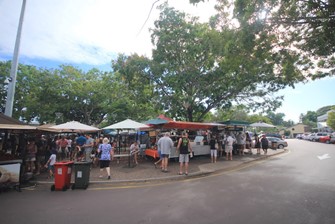
Home – Parap Village Markets – Northern Territory
– Held every Saturday throughout the year one of the best things here.
– Located in the suburb of Parap, known for its multicultural community.
– Offers a vibrant atmosphere with stalls selling fresh produce, arts and crafts, and international foods.
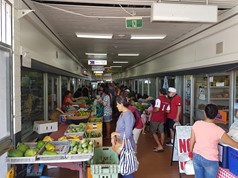
Rapid Creek Markets – Northern Territory – Darwin’s Oldest Market!
– Open on Sundays, showcasing a mix of fresh produce, food stalls, and arts and crafts.
– Known for its diverse range of tropical fruits, Asian vegetables, and local seafood.
– Offers a unique shopping experience with a laid-back vibe.
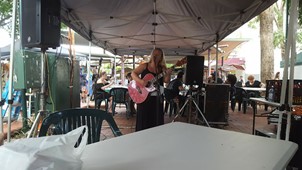
– Operates on Sundays along the Nightcliff Foreshore.
– Focuses on local arts, crafts, clothing, and fresh produce.
– Features live music, food stalls, and a relaxed, family-friendly atmosphere.
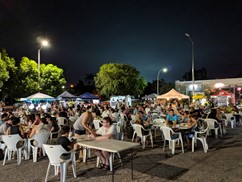
– Held on Saturdays during the dry season (May to October).
– Located in the suburb of Malak, offering a mix of gourmet food, arts, crafts, and entertainment.
– Emphasizes sustainability and supports local businesses.
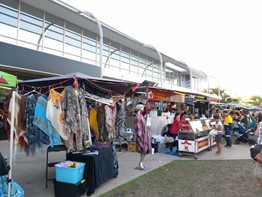
6. Palmerston and Rural Markets:
– Takes place on Fridays in Palmerston, a satellite city of Darwin.
– Showcases local produce, handmade crafts, and food stalls.
– Provides a community-focused market experience.

Coolalinga Central – Coolalinga Central Website
– Operates on Saturdays and Sundays in Coolalinga, located outside Darwin.
– Offers a variety of fresh produce, arts, crafts, and food stalls.
– Known for its friendly community atmosphere and diverse offerings.
– Takes place on the first Sunday of each month.
– Located in the rural area of Berry Springs.
– Showcases local produce and handmade crafts and provides a relaxed, country market experience.
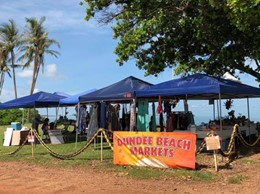
Dundee Beach Markets – Dundee Beach Holiday Park
– A monthly market held in the coastal village of Dundee Beach.
– Offers a mix of local arts, crafts, fresh produce, and food stalls.
– Provides a unique market experience in a scenic coastal setting.
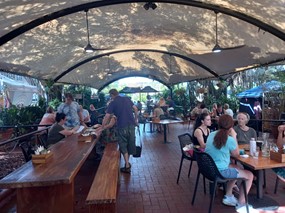
10. Nightcliff Friday Foreshore Market:
– Operates every Friday evening.
– A smaller version of the Sunday markets, with a focus on arts, crafts, and food stalls.
– A great place for those looking for a more intimate market experience.
11. Humpty Doo and Rural Area Farmers’ Market:
– Takes place on the first Saturday of each month.
– Located in the rural area of Humpty Doo.
– Features fresh produce, arts, crafts, and local goods, emphasizing a farm-to-table approach.
12. Winnellie Community Markets:
– Held on the third Sunday of each month.
– Located in the industrial suburb of Winnellie.
– Offers a mix of local produce, arts, crafts, and second-hand goods.
– A monthly market held on Saturdays.
– Located in the suburb of Lyons.
– Features local produce, handmade crafts, and a community-focused atmosphere.
14. Howard Springs Country Fair:
– Takes place on the last Sunday of each month.
– Located in the rural area of Howard Springs.
– Showcases local produce, handmade crafts, and a variety of food stalls.
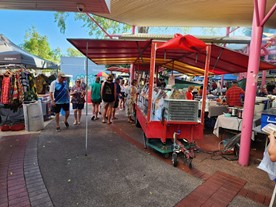
15. Dripstone Cliffs Markets:
– A boutique market held at the Dripstone Cliffs along the Nightcliff Foreshore.
– Features local artists, designers, and food vendors.
– Provides a unique shopping experience with ocean views.
16. Humpty Doo Markets:
– Held on Saturdays.
– Known for its laid-back atmosphere and diverse stalls.
– Offers fresh produce, arts and crafts, and a variety of food options.
17. Manton Dam Markets:
– A monthly market held at Manton Dam Recreation Area.
– Features local produce, handmade crafts, and live entertainment.
– Ideal for those seeking a market experience in a natural setting.
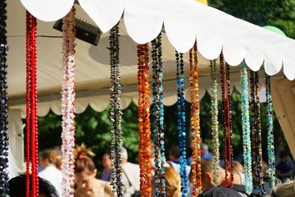
18. Berrimah Second Hand Market:
– Operates on Sundays.
– A market dedicated to second-hand goods, including clothing, furniture, and household items.
– Offers a sustainable shopping option for bargain hunters.
– Held on Sundays.
– Located in the suburb of Anula.
– Showcases local produce, handmade crafts, and a range of community stalls.
20. Berry Springs Art and Craft Fair:
– A yearly event featuring local artists and crafters.
– Offers a variety of handmade goods, including artwork, jewellery
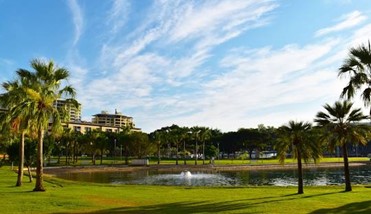
Final Thoughts
Darwin, Australia, emerges as a captivating blend of natural beauty, cultural diversity, and historical significance. Its tropical landscapes, characterized by lush greenery and stunning sunsets, provide a picturesque backdrop to a city that has evolved from a telegraph station to a thriving port hub. The rich tapestry of cultures, celebrated through vibrant markets and culinary delights, adds a unique flavour to Darwin’s identity.
The city’s historical narrative, marked by events like World War II and Cyclone Tracy, testifies to its resilience and the strength of its community. Beyond its tourist attractions, Darwin serves as an economic and strategic centre, contributing to the prosperity of the Northern Territory. With a laid-back atmosphere, friendly community spirit, and a commitment to sustainability, Darwin stands as a city that invites exploration and appreciation for its diverse facets, making it a truly special destination in the heart of Australia’s Top End.
Darwin’s appeal extends beyond its natural, cultural, and historical attributes to embody a lifestyle that embraces both leisure and economic vitality. The city’s recreational spaces, waterfront precincts, and commitment to quality of life underscore its emphasis on well-being. As a gateway to iconic natural wonders like Kakadu and Litchfield National Parks, Darwin positions itself as a starting point for adventures into the unique landscapes of the Northern Territory.
Its strategic location and economic significance contribute to Australia’s global connections, making it not only a destination for exploration but also a pivotal player in the nation’s economic tapestry. In essence, Darwin is not just a city; it’s a dynamic and evolving story of resilience, diversity, and opportunity, inviting all who encounter it to be a part of its ongoing narrative.
⚠️ Don’t forget our complete guides of Australia
✅ Best beaches in Western Australia
☝🏻 And way more
🔍 Just type ” Australia “ or the topic you choose in the search bar for all our articles
WHO AM I ?
Hello !
I am Eric, a French Australian citizen based between Australia, Asia and Bali an I love to travel and experience the world. I generally like outdoor activities, wellness, great food and venues , party and real local adventures ! I am a Yoga practitioner and fitness lover
I created this blog because I love to travel and I want to share my experiences with others. I’ve been traveling since I was a child, and I’ve been to over 50 countries. I’ve seen some amazing things and met some amazing people, and I want to help others experience the same things.
I believe that travel is one of the best ways to learn about the world and about yourself. When you travel, you’re forced to step outside of your comfort zone and experience new things. You learn about different cultures, different religions, and different ways of life. You also learn about yourself, your strengths, and your weaknesses.
Travel can also be a great way to make new friends. When you’re traveling, you’re surrounded by people from all over the world, and you’re all in the same boat. You’re all there to explore and experience new things, and that can create a bond between people.

Uyuni Salar, Boliva
Let’s connect together !
I hope that my travel blog will inspire others to travel and to see the world. I also hope that it will help people to learn about different cultures and to become more open-minded.
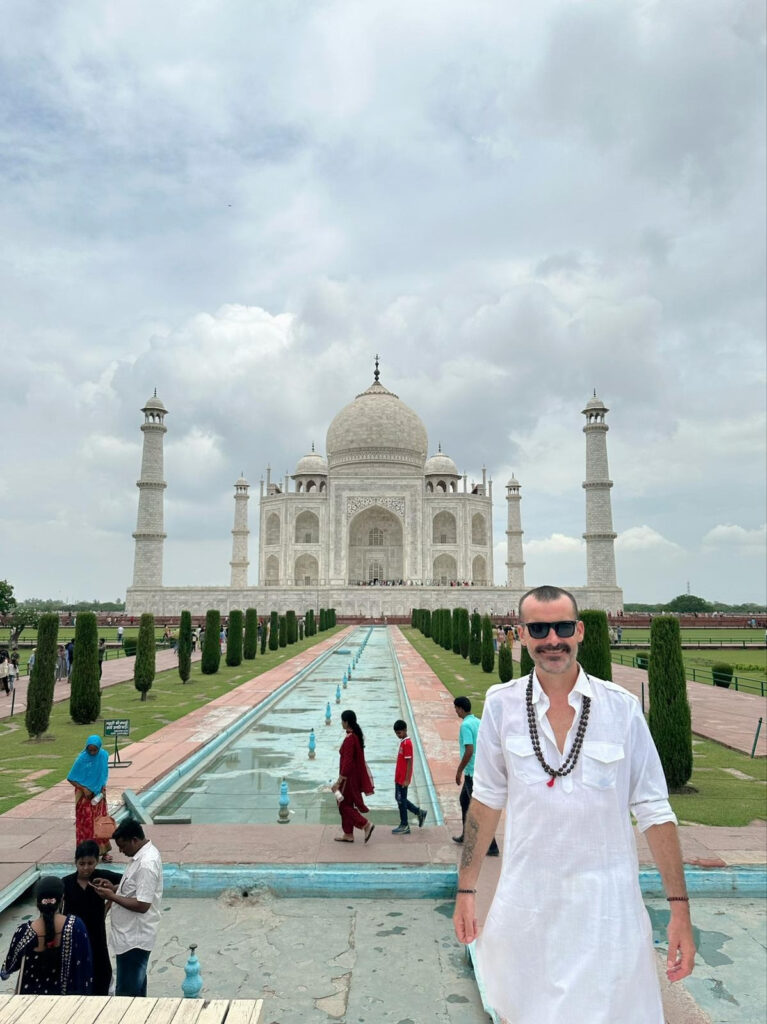
Taj Mahal, Agra, India




![Best Caravan Parks Byron Bay [Pro Camper Award 2025]](https://funkyfreshtravels.com/wp-content/uploads/2024/08/ben-bouvier-farrell-TcSrTd5DexQ-unsplash-768x1152.jpg)

![Best Wineries in Blue Mountains [Vino Guide 2025]](https://funkyfreshtravels.com/wp-content/uploads/2024/06/Picture4.png)

![17 Best Beaches in Australia [Beach Bum Guide 2025]](https://funkyfreshtravels.com/wp-content/uploads/2024/06/photo-1495546992359-94a48035efca-768x512.avif)
![5 Best Aquariums to Visit Melbourne Vic [ Family Award 2025 ]]](https://funkyfreshtravels.com/wp-content/uploads/2024/07/2020-09-13.jpg)